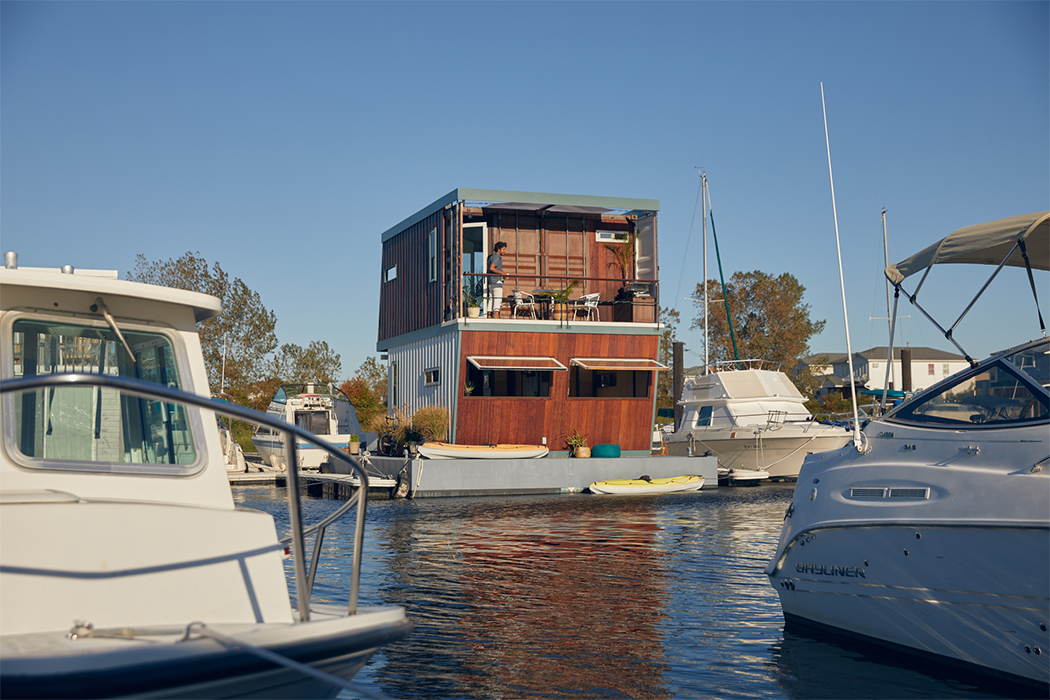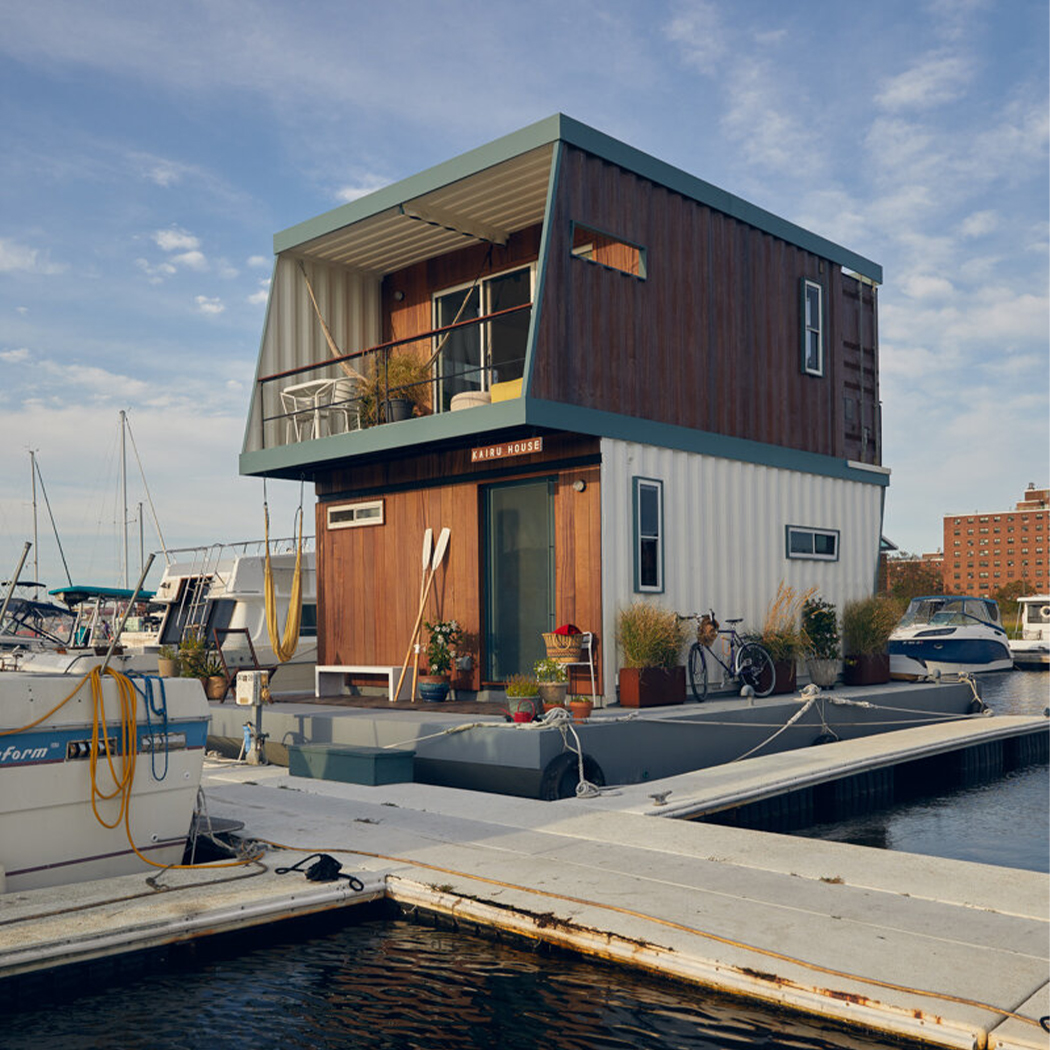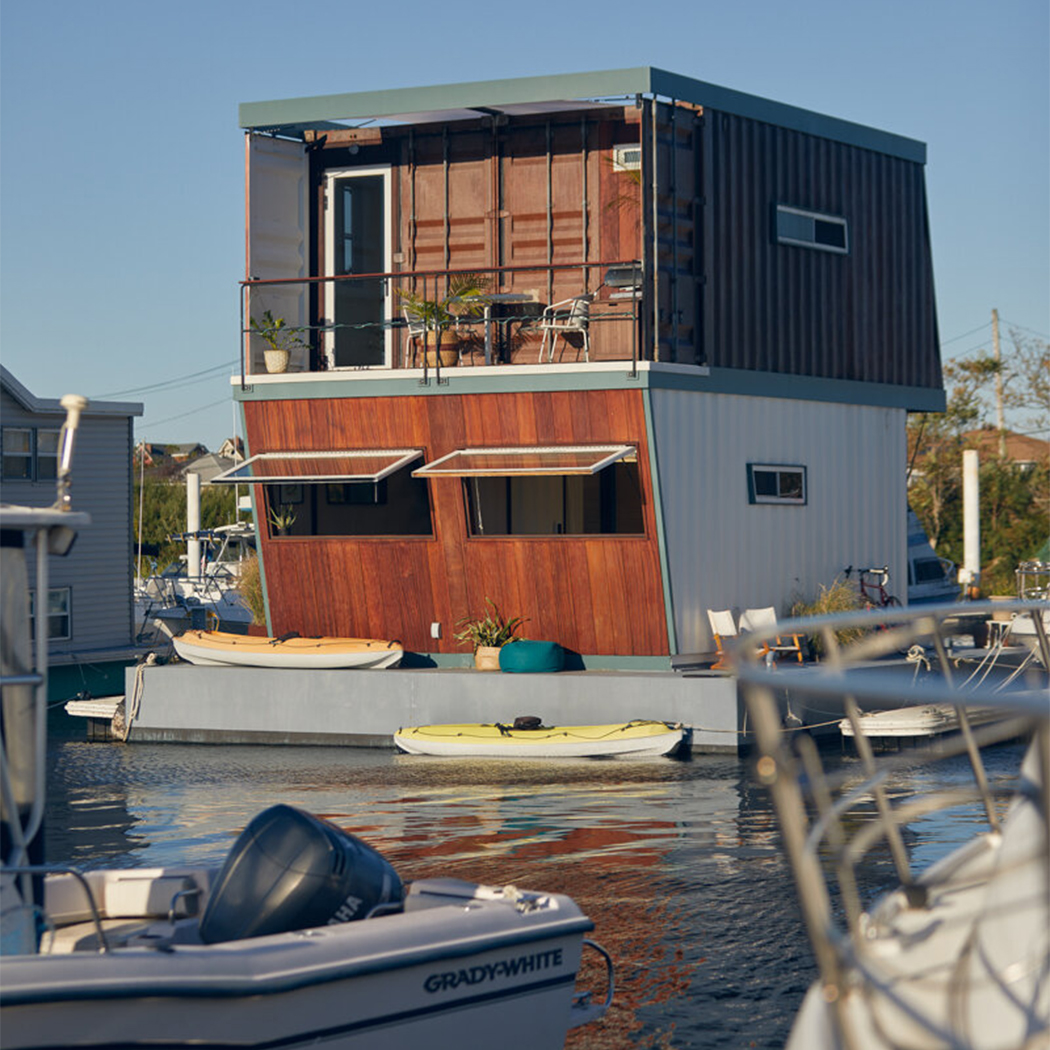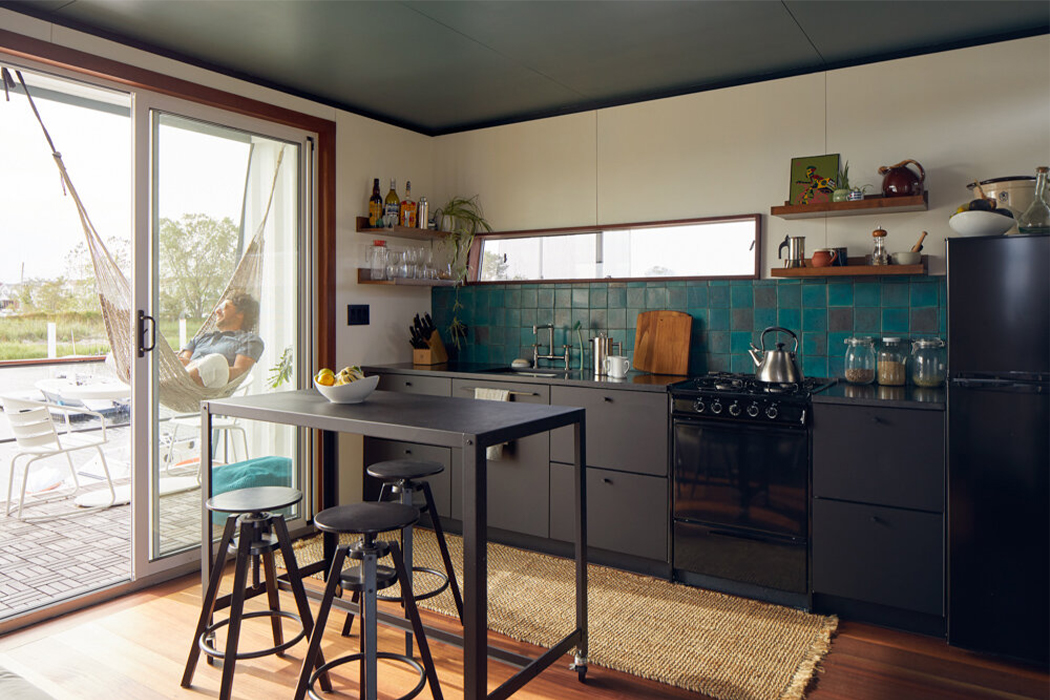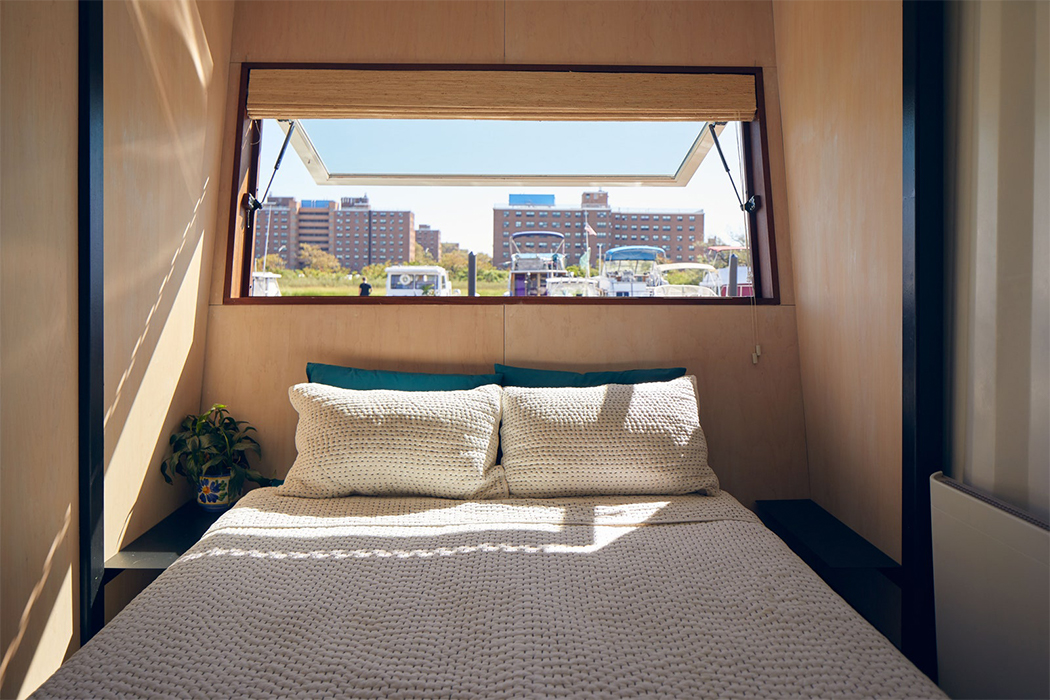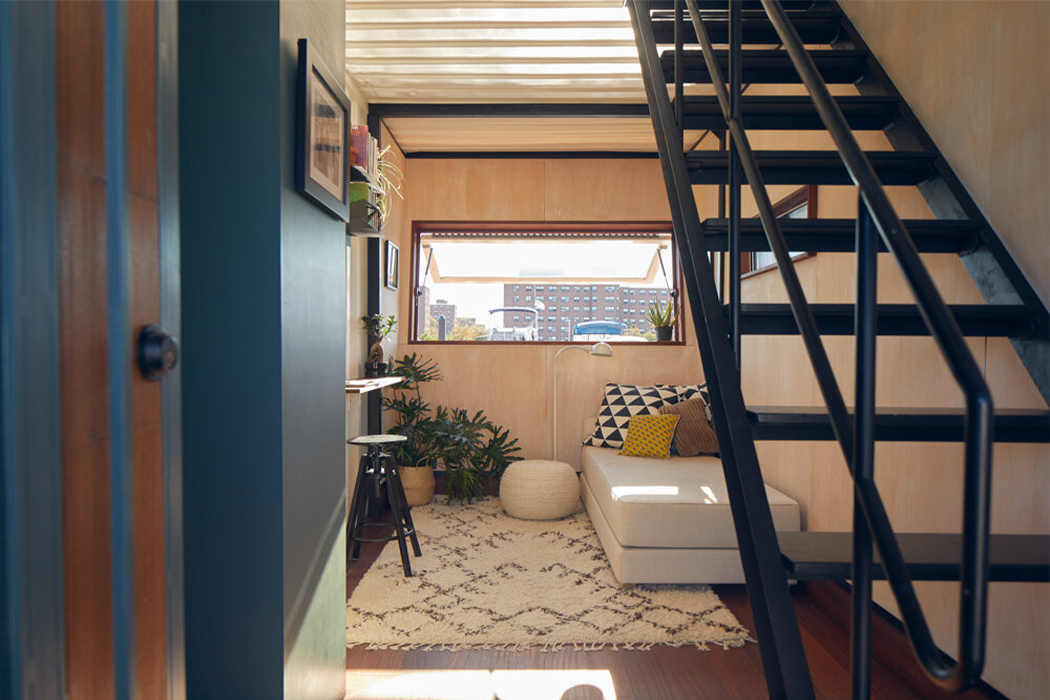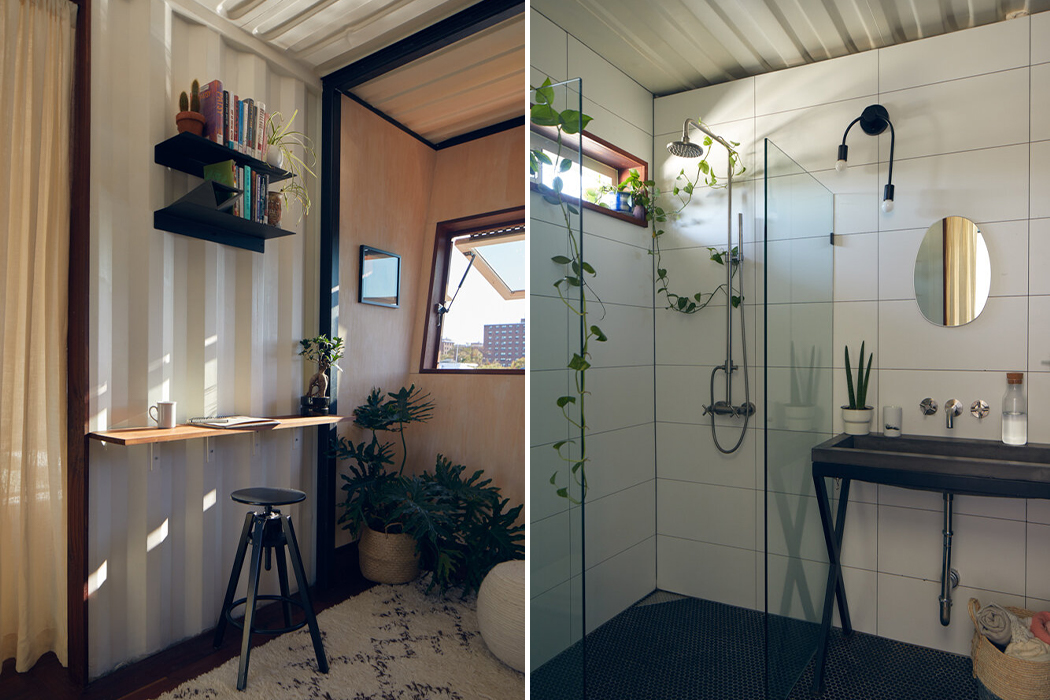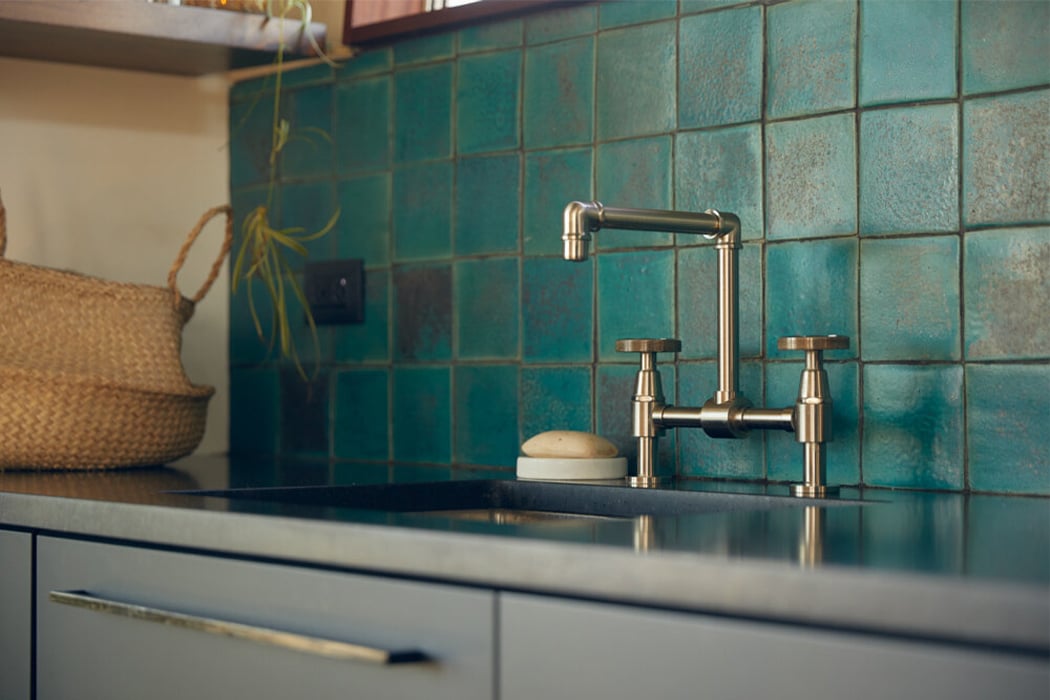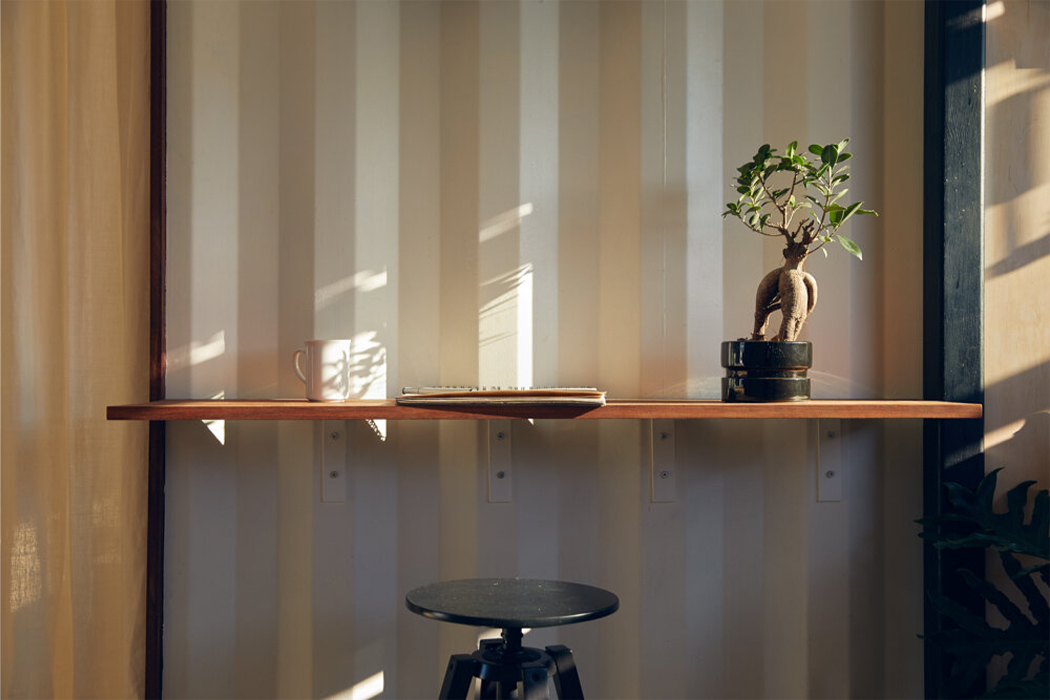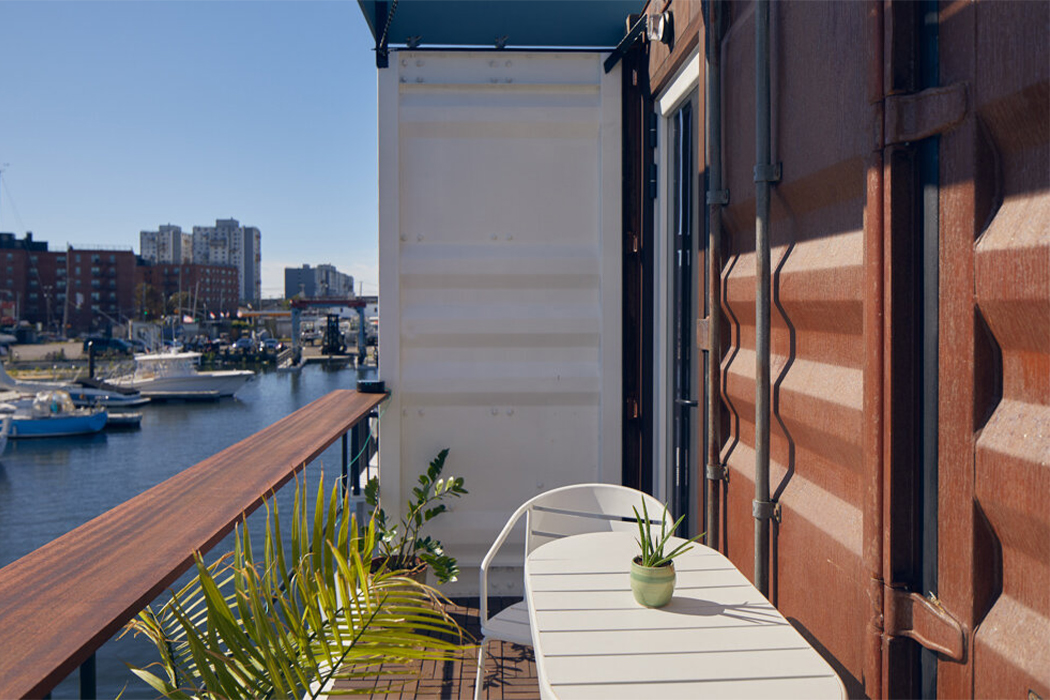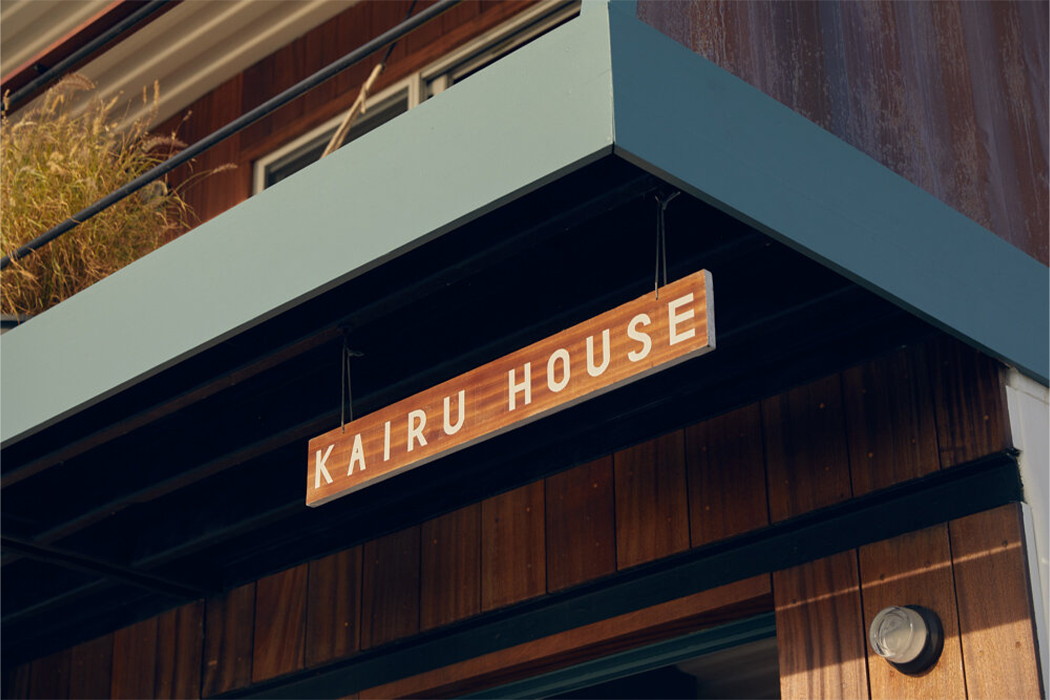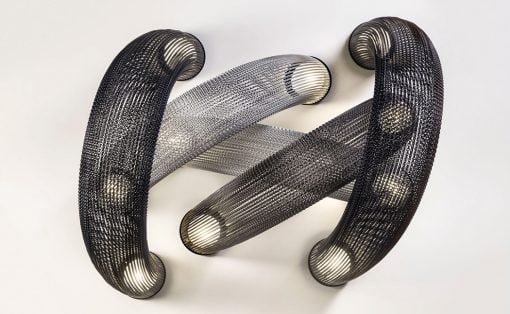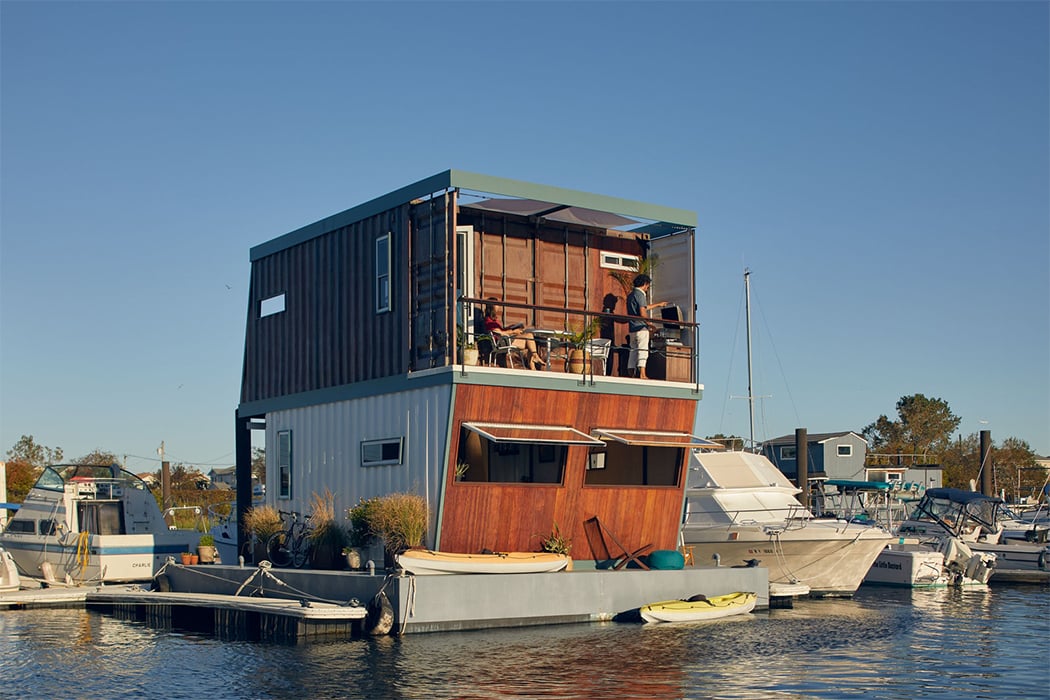
When you are apartment hunting in New York City, one of the common phrases used is “it’s the size of a container” to indicate how tiny the home is. But what if when you say “container” you actually mean a floating modern home off the Rockaway peninsula in Jamaica Bay? Or you could call it Kairu House! This two-story home crafted from shipping container materials and sapele wood is designed to rise and fall with the natural changes in sea level as we battle climate change. Kairu is a variation of the Japanese word for frog which is an homage to the water-based home.
The area is still recovering from Hurricane Sandy even after a decade and could use innovative reconstruction. That is where Kairu House comes in as an affordable, sustainable, and resilient home. It will become the primary residence for the founder and principal architect of Rekstur and his family. The main building is made of two 40-feet-tall shipping containers. The repurposed containers are cut in half (diagonally) and stacked on top of each other to make separate floors. The two steel sectional barges were welded together to create a single platform for the house which is docked at a local marina. It is spacious on the inside and the interiors are contemporary, modern, and bring in natural light and add a playful aesthetic with colorful accents.
The 470-square-feet home includes a bedroom, bathroom, and living space on the first floor. The second floor is where you will find a kitchen, dining room, and two gorgeous decks that overlook the bay. The awning windows have been made from repurposed doors while the staircase and framed front door are custom-made from steel. I personally love the stone bathroom sink which is a fun accent piece and also other details like the black granite kitchen counters and the kitchen backsplash made from handmade turquoise tiles!
“The goal of the project was to build a resilient, sustainable residence that responded to the needs of the environment but didn’t sacrifice the comforts of modern living. Building and living on water has been an incredible experience. Architecture on water has a more immediate need to be in tune with natural surroundings, and I’m grateful that this project has put me in closer touch with the local environment,” said Rekstur’s principal architect Adam Wiesehan. I, for one, would move in to a floating house in New York City in a heartbeat because rats cannot swim and I would have incredible views!
Designer: Rekstur
